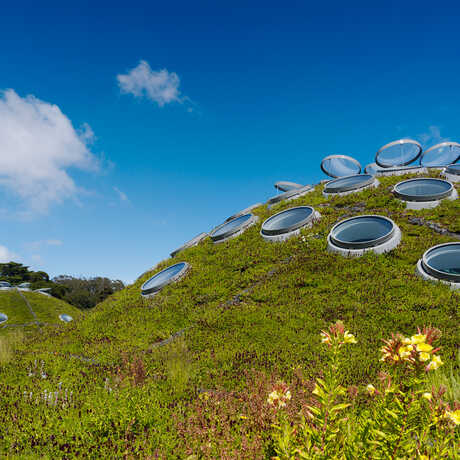Visit an aquarium, planetarium, rainforest, and natural history museum—all under one living roof.
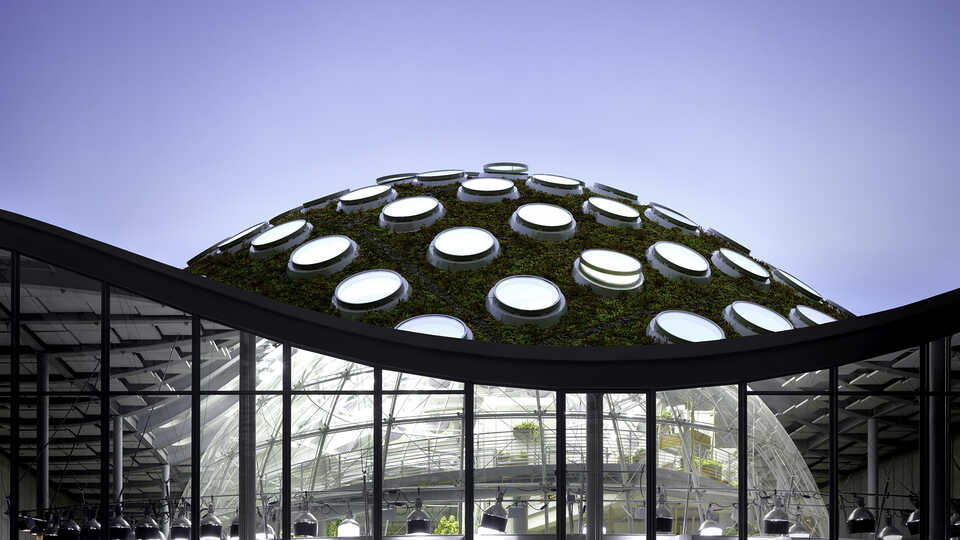
From our high-tech basement to beautifully green Living Roof, the Academy's building and operations reflect a commitment to energy efficiency, reducing our carbon footprint, and preserving natural resources.
Living Roof
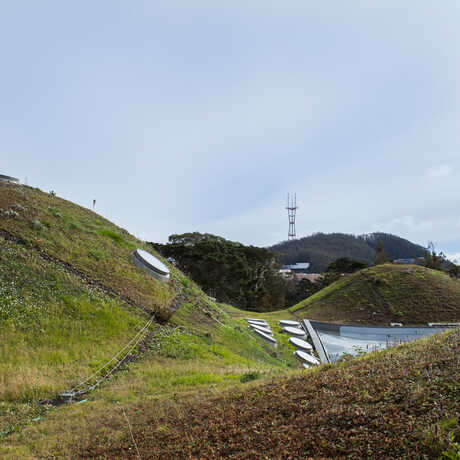
The Academy’s iconic Living Roof is more than a beautiful architectural feature; it's critical to the building’s heating and cooling efficiency. The six inches of soil substrate on the roof acts as natural insulation and prevents stormwater runoff from carrying pollutants into the ecosystem. Populated with native plants, the roof also serves as habitat for local birds and butterflies.
Natural Light
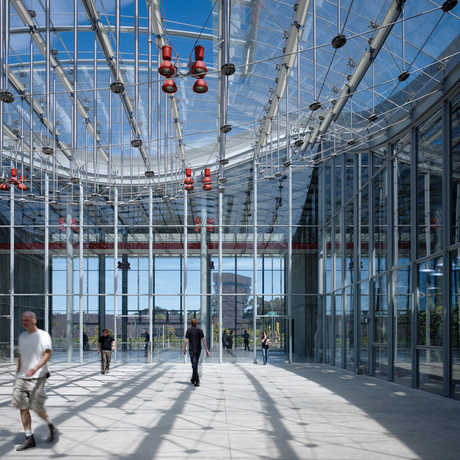
Floor-to-ceiling glass—made with low iron content for extra clarity—is used extensively throughout the building, allowing visitors to see Golden Gate Park from almost any point inside the museum. This high-performance German glass also reduces standard levels of heat absorption, minimizing energy used for cooling.
Floor-to-ceiling windows on the back of the building provide natural light to our offices and allow staff to open and close windows as needed, a rarity in most office environments. All told, 90 percent of all regularly occupied spaces at the Academy have access to daylight and outside views.
Heating and Cooling
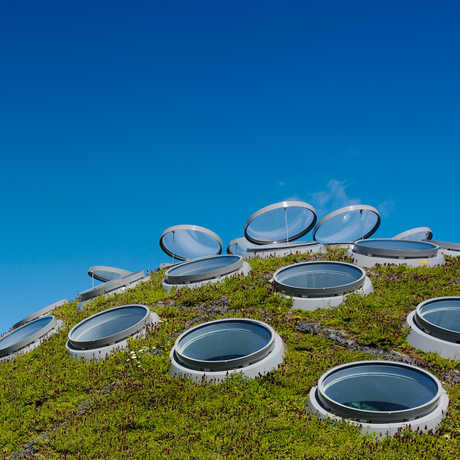
On the museum’s main public floor, an automated ventilation system takes advantage of the natural air currents of Golden Gate Park to regulate temperatures inside the building. Throughout the day and night, louvers on all four sides of the Academy open and close, providing fresh air and cooling the building in ways that reduce our dependence on traditional HVAC systems and chemical coolants. The many circular skylights overhead not only provide natural light to the rainforest and aquarium; they also open and close automatically to allow hot air to escape as needed.
Radiant floor heating is another key component of the Academy’s energy efficiency. Because warm air rises, a traditional forced-air heating system for our 35-foot-high public spaces would be wasteful in the extreme. Instead, tubes embedded in the concrete floor carry hot water, warming the spaces people actually move through and reducing the building’s energy needs by an estimated 10 percent annually.
Renewable Energy
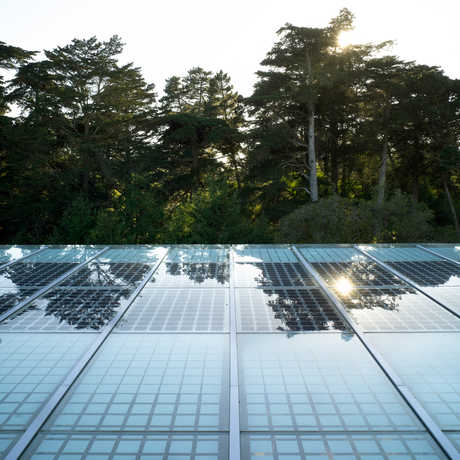
A solar canopy around the perimeter of the Living Roof contains 60,000 photovoltaic cells that supply almost 213,000 kWh of clean energy per year (at least 5 percent of the Academy's standard energy needs)—and prevents the release of more than 405,000 pounds of greenhouse gas emissions annually.
We also harness energy in several smaller ways throughout the building. Sensor faucets in the bathrooms charge themselves with each use, for example (flowing water causes an internal turbine to generate power and charge the battery pack), while heat recovery systems capture and utilize heat produced by HVAC equipment, reducing heating energy use.
Visitors save $3 on admission by walking, biking, or taking public transportation to the Academy!
Learn more about the Academy’s mission to regenerate the natural world through science, learning, and collaboration.


